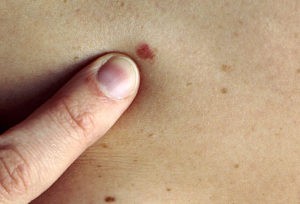
Diagnosed with Cancer? Your two greatest challenges are understanding cancer and understanding possible side effects from chemo and radiation. Knowledge is Power!
Learn about conventional, complementary, and integrative therapies.
Dealing with treatment side effects? Learn about evidence-based therapies to alleviate your symptoms.
Click the orange button to the right to learn more.
Pre-cancers- DCIS, Polyps, PSA, Mole, etc.

Pre-cancers are all about risk. That is to say, a diagnosis of a type of pre-cancer is a diagnosis that tells you that your risk of that type of cancer has increased. The diagnosis says nothing about getting cancer or having cancer. This diagnosis is simply telling you that you have cells that are abnormal and therefore have an increased risk of becoming cancer.
If most people receive a diagnosis of pre-cancer, chances are that they will want to remove those abnormal cells. And that’s where the real risk comes in. Surgery to remove anything, can increase your risk of some sort of health condition.
I admit to sitting out in the sun way too often as a teenager. I admit to getting sunburned as well. As a result, I have an increased risk of skin cancer and have regular check-ups with a dermatologist. So far, many of the moles, rough patches, etc. have been pre-cancer, not cancer.
Further, research has identified many evidence-based, non-conventional therapies that reduce my risk of cancer- skin, prostate, colorectal, etc.
So yes, interpret a diagnosis of pre-cancer as a call-to-action to include evidence-based non-conventional therapies into your life that will reduce your risk of cancer. But try to not freak-out and think you have cancer- because you don’t.
What are pre-cancers?
“Pre-cancer” is a general term used to describe abnormal cells that are not yet cancerous but have the potential to develop into cancer if left untreated. There are several types of pre-cancerous conditions, and they can occur in various tissues and organs throughout the body. Some common examples include:
- Actinic Keratosis: This is a pre-cancerous skin condition caused by long-term sun exposure. It typically appears as rough, scaly patches on the skin.
- Dysplasia: This term is used to describe abnormal cells that can be found in various tissues, such as the cervix (cervical dysplasia) or the lining of the colon (colonic dysplasia).
- Lung Dysplasia: This refers to abnormal cells in the lining of the lung that may lead to lung cancer.
- Barrett’s Esophagus: This is a condition where the cells lining the lower part of the esophagus change due to chronic acid exposure, potentially leading to esophageal cancer.
- Leukoplakia: This condition involves white patches on the mucous membranes of the mouth and can be a precursor to oral cancer.
- Cervical Intraepithelial Neoplasia (CIN): This is a pre-cancerous condition of the cervix, which can be categorized into grades ranging from mild (CIN 1) to severe (CIN 3).
- Atypical Hyperplasia: This is an overgrowth of cells in breast tissue that is not cancer but can increase the risk of developing breast cancer.
It’s important to note that not all pre-cancer conditions progress to cancer, and some may regress or remain stable over time. Regular medical check-ups and screenings are essential for early detection and intervention. The specific terminology and classifications may vary depending on the medical field and the organ or tissue in question. Always consult with a healthcare professional for accurate information regarding your specific situation.
I am a long-term survivor of an incurable blood cancer. I have seen the good, the bad and the ugly side of conventional cancer treatments. Please believe me when I say that you want to avoid all things cancer.
Have you been diagnosed with a type of pre-cancer? If you’d like to learn more about evidence-based, non-conventional therapies shown to reduce your risk of that type of cancer, let me know.
David.PeopleBeatingCancer@gmail.com
Hang in there,
David Emerson
- Cancer Survivor
- Cancer Coach
- Director PeopleBearingCancer
Addressing overdiagnosis and overtreatment in cancer: a prescription for change
“A vast range of disorders—from indolent to fast-growing lesions—are labelled as cancer. Therefore, we believe that several changes should be made to the approach to cancer screening and care, such as use of new terminology for indolent and precancerous disorders.
We propose the term indolent lesion of epithelial origin, or IDLE, for those lesions (currently labelled as cancers) and their precursors that are unlikely to cause harm if they are left untreated.
Furthermore, precursors of cancer or high-risk disorders should not have the term cancer in them. The rationale for this change in approach is that indolent lesions with low malignant potential are common, and screening brings indolent lesions and their precursors to clinical attention, which leads to overdiagnosis and, if unrecognised, possible overtreatment.
To minimise that potential, new strategies should be adopted to better define and manage IDLEs. Screening guidelines should be revised to lower the chance of detection of minimal-risk IDLEs and inconsequential cancers with the same energy traditionally used to increase the sensitivity of screening tests.
Changing the terminology for some of the lesions currently referred to as cancer will allow physicians to shift medicolegal notions and perceived risk to reflect the evolving understanding of biology, be more judicious about when a biopsy should be done, and organise studies and registries that offer observation or less invasive approaches for indolent disease.
Emphasis on avoidance of harm while assuring benefit will improve screening and treatment of patients and will be equally effective in the prevention of death from cancer…”
What It Means if You Have Precancerous Cells
“A precancerous cell (pre-cancers) is a cell with certain abnormalities that makes it more likely to become cancerous. These abnormalities don’t mean that it will become cancer—in fact, most don’t—but the diagnosis allows healthcare providers to monitor you closely and act quickly if cancer does occur. In some cases, the affected tissues may be removed proactively.
Pre-cancer cells can occur in nearly any part of the body, including
- the skin,
- breasts,
- colon,
- and cervix.
Unlike cancer cells, they do not invade nearby tissues or spread to distant organs.
This article explains what precancerous cells are and what causes them. It also describes the different types of precancerous cells and what can be done to treat them…”


